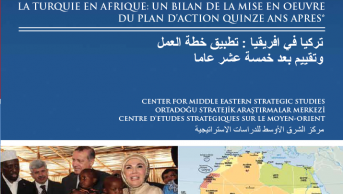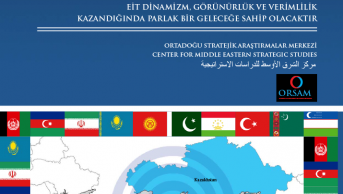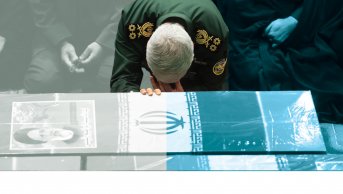Süleymaniye Book Hospital Saves Damaged Manuscripts

The Süleymaniye Manuscript Library is a national treasure of Turkey. In particular, it contains a large number of manuscripts that reflect the richness of Islamic culture and civilization.
The library presently has more than 74,000 manuscripts and printed books. It was reorganized in 1927 at the madrasas of the Süleymaniye Mosque complex (kulliya). The nucleus of the library was the old library established by Ottoman Sultan Süleyman the Magnificent more than four centuries ago.
The Süleymaniye Manuscript Library is known to contain, among other things, copies of all the surviving works of Ibn Sina (Avicenna), one of the most famous scientists of the Muslim world. Some of them are dated as far back as the 11th century. Ibn Sina’s works in the Süleymaniye Library are all unique even if they are just copies.
Some of them are valuable because of their calligraphic style, miniatures, illustrations and bindings. As such, they are invaluable and their significance is deemed to transcend the boundaries of time and culture.
Ibn Sina was one of the greatest philosophers and scientists of the Muslim world who influenced the West and was studied by Europeans. He was born near Bukhara, Uzbekistan. For that reason, he is considered as being of Turkic ethnic stock. Were he born today, he would be an Uzbek citizen.
Nevertheless, Arabs consider him to be an Arab scientist. Iran believes him to be Persian, with its government even offering a United Nations Educational, Scientific and Cultural Organization (UNESCO) Avicenna Prize for Ethics in Science. Turkey, meanwhile, claims that he was a Turk.
Naturally, Uzbekistan has reacted to claims of Ibn Sina’s alleged Arab or Iranian identity in international forums. We should also add that during the period of scientific awakening, enlightenment and the age of reason in the Muslim world between the ninth and 11th centuries, ethnic identity was not important. We should appreciate the contributions of all scientists from the Muslim world to humanity as a whole.
Nevertheless, all these underline the significance of the Süleymaniye Manuscript Library as an institution with an international scope and interest, not only for the Muslim world but also for other countries.
The idea to turn the library into an international book hospital belongs entirely to Professor Ekmeleddin İhsanoğlu, the present secretary-general of the Organization of Islamic Cooperation (OIC). İhsanoğlu, a close friend of mine, also served as director general of the Research Centre for Islamic History, Art and Culture (IRCICA) for more than two decades. When I was appointed the Turkish ambassador to UNESCO in Paris, İhsanoğlu, as OIC secretary-general and director general of the IRCICA, paid a visit to UNESCO in Paris and told me, inter alia, that a project sponsored by UNESCO to create an international book hospital in the Süleymaniye Library utilizing the advanced technology available in the world to preserve and restore old and damaged manuscripts would be extremely beneficial. He was also of the opinion that as a UNESCO project, such a hospital would add to the Süleymaniye Library’s reputation and that there could also be a possibility of providing scholarships to teach and to transfer the necessary knowledge and train national experts as well.
We should also note that the Süleymaniye Library was included in UNESCO’s Memory of the World Register in 2003 as a documentary heritage of humanity.
In order to realize such a project, there were various forms of communication between Turkey and UNESCO authorities. UNESCO as an international organization was not in a position to provide, in principle, the necessary funds but could provide the required credibility for possible financing by institutions and organizations.
To prepare for the project, internationally renowned UNESCO experts Jean-Marie Arnoult and Andrea Papi visited İstanbul in 2004 and prepared reports on a possible Süleymaniye book hospital.
As a matter of fact, both experts indicated in their reports that a book hospital would be established by IRCICA and the Turkish Ministry of Culture and Tourism in cooperation with UNESCO. In the reports, the objective of the book hospital was stated as:
“[To] enlarge the existing unit in the Süleymaniye Library in accordance with modern standards and set up educational and training programs for future restorers in the conservation, preservation and restoration of rare books and manuscripts as well as giving theoretical and practical training to those who will undertake this job in other libraries. [The] establishment of a fully equipped restoration laboratory where manuscripts and rare books in the Süleymaniye and outside libraries will be conserved and restored.”
The reports emphasized that this laboratory would be a reference for Turkey as well as for countries in the Middle East, Africa, Caucasia and Central Asia.
In terms of the financial aspect of the project and its budget, these reports also listed approximate figures.
The report’s suggestion for a financial source was an international organization such as the European Union, which offers such a possibility with its cultural funds, or any other international organization, including the OIC.
With all this in mind, a Memorandum of Understanding (MoU) was signed on Dec. 8, 2006 in Paris at UNESCO’s headquarters between the Republic of Turkey, UNESCO and IRCICA concerning the establishment of the Süleymaniye book hospital project. I was authorized to sign the MoU on behalf of the Turkish government as ambassador and Turkey’s permanent delegate to UNESCO together with UNESCO Director General Koichiro Matsuura and Dr. Halit Eren, the director general of IRCICA.
The MoU was part of 33 C/Resolution 51 adopted by the General Conference of UNESCO acknowledging the Memory of the World Program as the international reference framework for information preservation. According to the MoU, the purpose was to establish the legal and operational framework for collaboration and joint activities by the parties, namely the Ministry of Culture and Tourism of Turkey, IRCICA and UNESCO, for the establishment of a book hospital provided that the necessary extra-budgetary funding could be secured.
In conforming with the budget estimates set out in the abovementioned reports by Arnoult and Papi, a summary of which was also attached to the MoU, the parties agreed to endeavor to secure extra-budgetary funding (from sources outside of UNESCO’s budget) in order to successfully implement the envisaged activities.
The Turkish government decided on Jan. 4, 2010 to ratify the MoU by virtue of a government decree that was published in the Official Gazette.
The implementation of the MoU and the establishment of an international book hospital at Süleymaniye Library in İstanbul would not only reflect well on Turkey’s cultural richness but would bring significant visibility and credit to Turkey due to its international framework. In order to secure financial support, the details of the project should be prepared and submitted to the European Union or another international institution such as the OIC.
The necessary details and elements for the project to be prepared and submitted are already present in the reports prepared by UNESCO experts and in the MoU as well.
The ratification of the MoU by the Turkish government is itself an indication that there is political will on the part of Turkey to realize the idea of an international book hospital in İstanbul.










